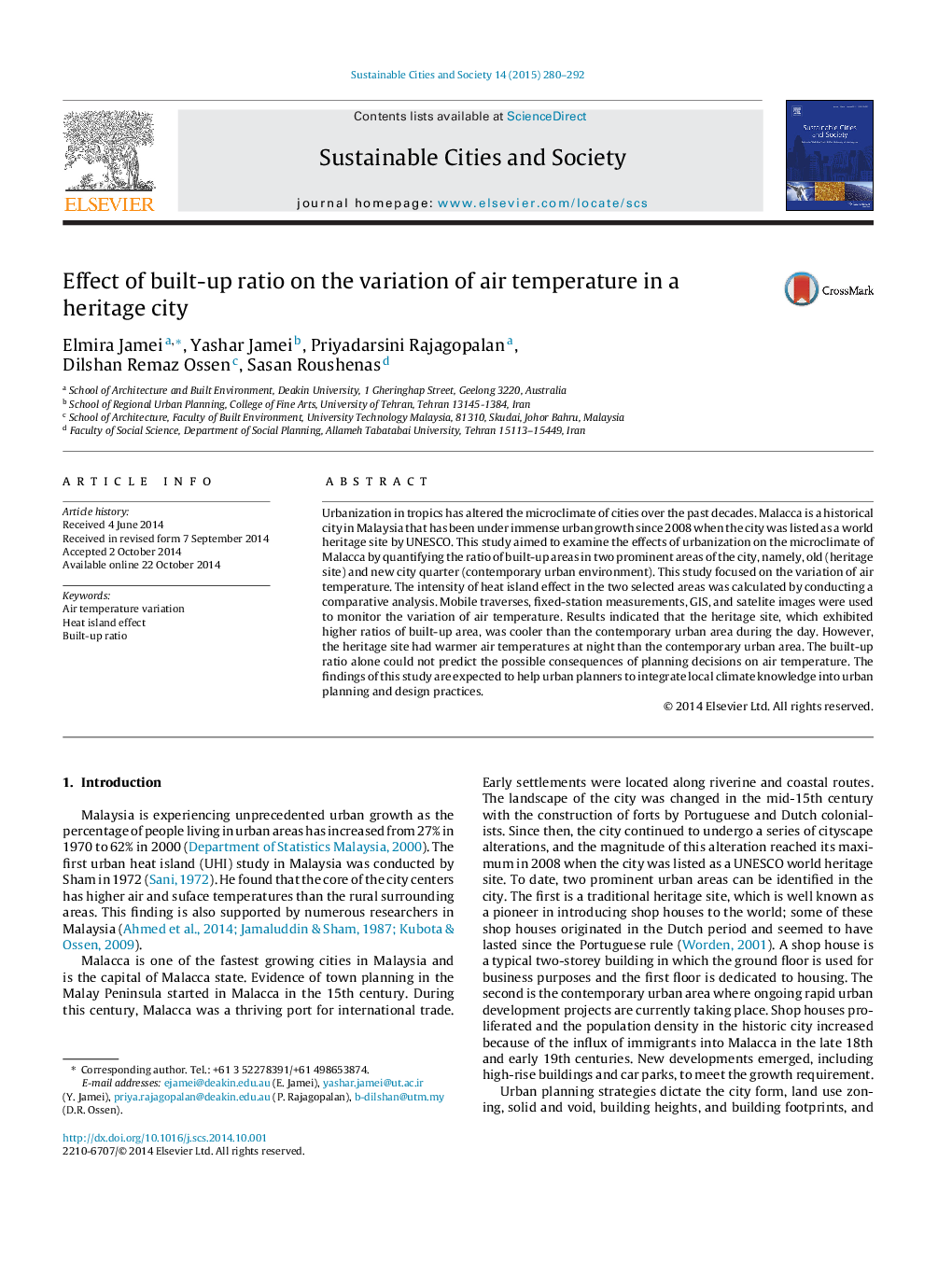| Article ID | Journal | Published Year | Pages | File Type |
|---|---|---|---|---|
| 6776587 | Sustainable Cities and Society | 2015 | 13 Pages |
Abstract
Urbanization in tropics has altered the microclimate of cities over the past decades. Malacca is a historical city in Malaysia that has been under immense urban growth since 2008 when the city was listed as a world heritage site by UNESCO. This study aimed to examine the effects of urbanization on the microclimate of Malacca by quantifying the ratio of built-up areas in two prominent areas of the city, namely, old (heritage site) and new city quarter (contemporary urban environment). This study focused on the variation of air temperature. The intensity of heat island effect in the two selected areas was calculated by conducting a comparative analysis. Mobile traverses, fixed-station measurements, GIS, and satelite images were used to monitor the variation of air temperature. Results indicated that the heritage site, which exhibited higher ratios of built-up area, was cooler than the contemporary urban area during the day. However, the heritage site had warmer air temperatures at night than the contemporary urban area. The built-up ratio alone could not predict the possible consequences of planning decisions on air temperature. The findings of this study are expected to help urban planners to integrate local climate knowledge into urban planning and design practices.
Keywords
Related Topics
Physical Sciences and Engineering
Energy
Renewable Energy, Sustainability and the Environment
Authors
Elmira Jamei, Yashar Jamei, Priyadarsini Rajagopalan, Dilshan Remaz Ossen, Sasan Roushenas,
